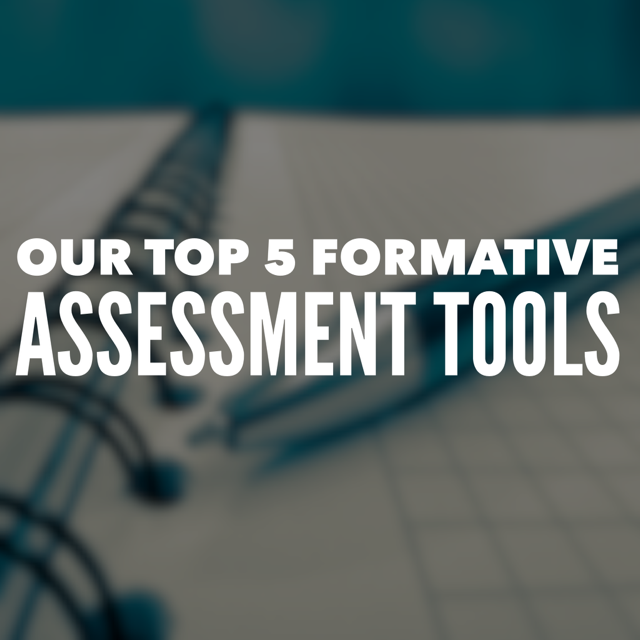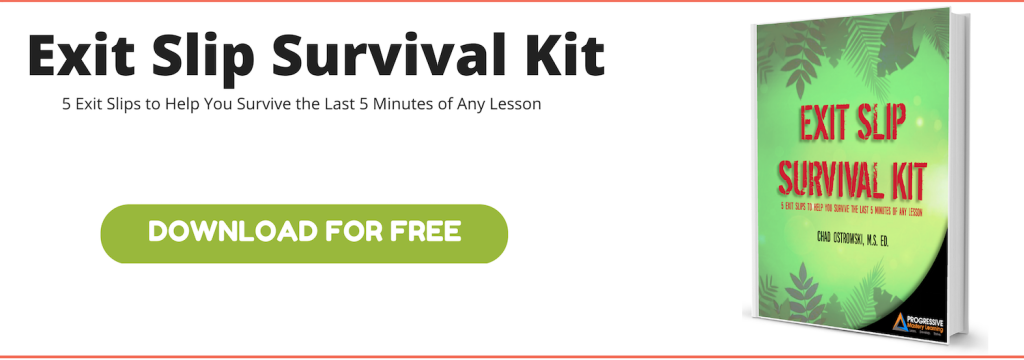Formative assessment is probably one of the most important pieces of good instruction. It allows you to know where you’re students are, which ones need extra help and which ones can work ahead or need an extension. Without formative assessment you are instructing for yourself and not the learners, because if you don’t know where they are, you can’t possibly get them to where they need to be.
While collecting more papers and grading more work doesn’t sound like much fun, we have found some formative assessment tools that make it much easier to quickly assess, collect, and analyze student progress. Many of these tools also have additional functions that make them invaluable to instructors.
Let’s take a look at the top 5 formative assessment tools.
1. SOCRATIVE
$Price: FREE
Tech Required: 1 : 1 (can share devices if needed)
Best Features: Versatile, Easy to use, Works on all platforms
Website: www.socrative.com
Overview:
Socrative is one of the easiest formative assessment tools to utilize if you have a 1:1 ratio of devices in your classroom (you can share devices as well if needed). It allows you to ask a question and collect data with ease. The questions get sent to your students’ devices and answers are collected on an easy-to-use platform that can be posted on the board to increase accountability or saved and exported for data analysis later.
You can also utilize Socrative on multiple devices if you have BYOD (Bring Your Own Device) at your school. The teacher account makes it easy to modify, change, or review student responses in real time. It works on PC, Mac, Apple and Android tablets, and most other connected devices. Once you create a “room” students can easily join that room daily so it is easy for them to remember how to get on and participate.
You can also change the way the assessment or questions are delivered from student paced, teacher paced, or student paced with direct feedback. All of the flexibility, options, and versatility of Socrative make it one of our favorite tools to use in the classroom for formative assessment.
2. GOOGLE FORMS
$Price: FREE
Tech Required: 1 : 1 (can share devices if needed)
Best Features: Data collection and analysis, Add on’s increase uses
Website: Google Forms
Overview:
Google forms can be used for multiple things including surveys, research, or lab data analysis. Recently though, with some add on’s, it has become a very powerful assessment tool in the classroom. You can create a “form” that is basically a survey with various question types including: multiple choice and fill in the blanks. You can also create drop down menus, calendar dates, and more to enhance your questions or the way in which your students can answer.
This platform also allows pictures to be added to questions. All of these features make it easy to see why Google Forms is a great choice for creating assessments for your students. The data is all collected in a neat spreadsheet that is timestamped. you can then filter results anyway you need. Free Add-on’s, like Floobaroo, allow you to automatically grade and assess student data quickly and efficiently. The generated survey or “form” can be shared via a simple link that can be posted on a class management site or emailed directly.
3. EDMODO
$Price: FREE
Tech Required: 1 : 1
Best Features: Course management features, Automatic Grading /Data Collection
Website: www.edmodo.com
Overview:
Edmodo is much more than a simple assessment tool. It is a full course management software that has some powerful features. The easy-to-use layout and features of the site for students and instructors make it a great choice for formative assessment.
For common core based courses it has a great new “snapshot” feature that allows for quick, randomly generated, standards based formative assessments for students. These can be generated for a class or individually for each student. Edmodo has some great quiz and polling features that allow you to interact with your learners in and out of the classroom. You can even assign quizzes, polls, or simply post questions as an exit slip.
All of these things can be utilized to formatively assess your students in various ways. One of the nicest features is that Edmodo basically does all the grading for you (except long extended response) which saves a lot of time and effort. You can even keep an entire grade book and track student progress individually with the analytic tools provided by the platform. Edmodo is useful as a stand alone course management site but its vast features for assessment made it a great fit for our top 5.
Note: I am fully aware that there are other great sites out there, (Blendspace, Schoology, Otus, and more) but I have had personal success and experience using Edmodo which is why it was featured here.
4. PLICKERS
$Price: FREE
Tech Required: 1 : 40 (One teacher device can scan up to 40 students)
Best Features: Quick data collection, Low tech requirement (only 1 device needed), Easy to implement.
Website: www.plickers.com
Review:
For those of you shouting at your screens: “What if I don’t have any tech in my room?!”, Plickers may be the answer. Plickers is an innovative system that uses QR type codes on printed cards that can be scanned by your smartphone using the free app. The cards are individually numbered (1-40) and scan as unique responses into the app. Each card can be assigned to a student using the simple online interface, or you can use it to assess the whole class randomly.
Analytics and data are scanned immediately and students don’t have to be afraid of saying or sharing the wrong answer. The aligned site also allows you to show a live view of student responses, which can be utilized to lead discussions or monitor class understanding of concepts.
Plickers could be the perfect solution for the teacher that wants quick assessment but doesn’t have the technology or resources to implement some of the other tools discussed.
5. EXIT SLIPS / NOTE CARDS / POST – IT NOTES
$Price: FREE (Unless you’re counting packs of note cards, or post-its)
Tech Required: NO TECH
Best Features: Low tech, simple, can be implemented quickly
Website: nope.
Review: If none of these tools or resources seemed useful to you, or you still own a “dumb” phone, there are still plenty of reliable and useful paper-based options you can implement when you use formative assessment (when your school or classroom breaks into the 21st century, I promise the first 4 resources will be great things to start playing with).
The simplest of these is a half sheet with essential questions from a lesson or learning task that you hand out and collect from students as an “exit slip.” Students simply fill it out before leaving the class. You should pick questions that can be assessed quickly so that you can organize them into “got it” and “need more help” piles at the end of the day.
Note cards can also be used in a similar way. If you get in a bind you can hand them out quickly and verbally ask a question and have students respond and hand the cards in. They can then be separated into categories based on whether students responded correctly or not.
Post-it notes are also a fun and creative way to let students show what they know. One of my favorite activities is called “what stuck with you today?”. You ask students a question or just simply have them write one thing they learned that day on the post it and then you have them place it on the board or on the door frame on the way out. Their responses can then be analyzed for understanding of core concepts covered.
I realize that there are 100’s if not 1,000’s of ways to use simple formative assessments like these or ways you could categorize, have students self-assess, or even evaluate each other’s responses. All of these are valuable and useful options when trying to see where your students ended up after a lesson and the primary reason they ended up on our list.
Regardless of which of these tools you decide to use in your classroom, it is what you do with the formative assessment that matters the most. Any instructor can collect data. It is those that use that data to drive instruction and inform their teaching that will improve instructional outcomes. In order for you to use your data it has to be simple. The digital tools discussed allow for quick analysis and collection which make it more likely to be used in planning further instruction. The paper-based options are also quick, but will require sorting and a bit more grading if used.
Formative assessment should NEVER be “more work” for the instructor, but rather should be integrated into daily instruction seamlessly to maximize efficiency and results. If you have any suggestions or think I left anything out please shoot me an email and let me know!



